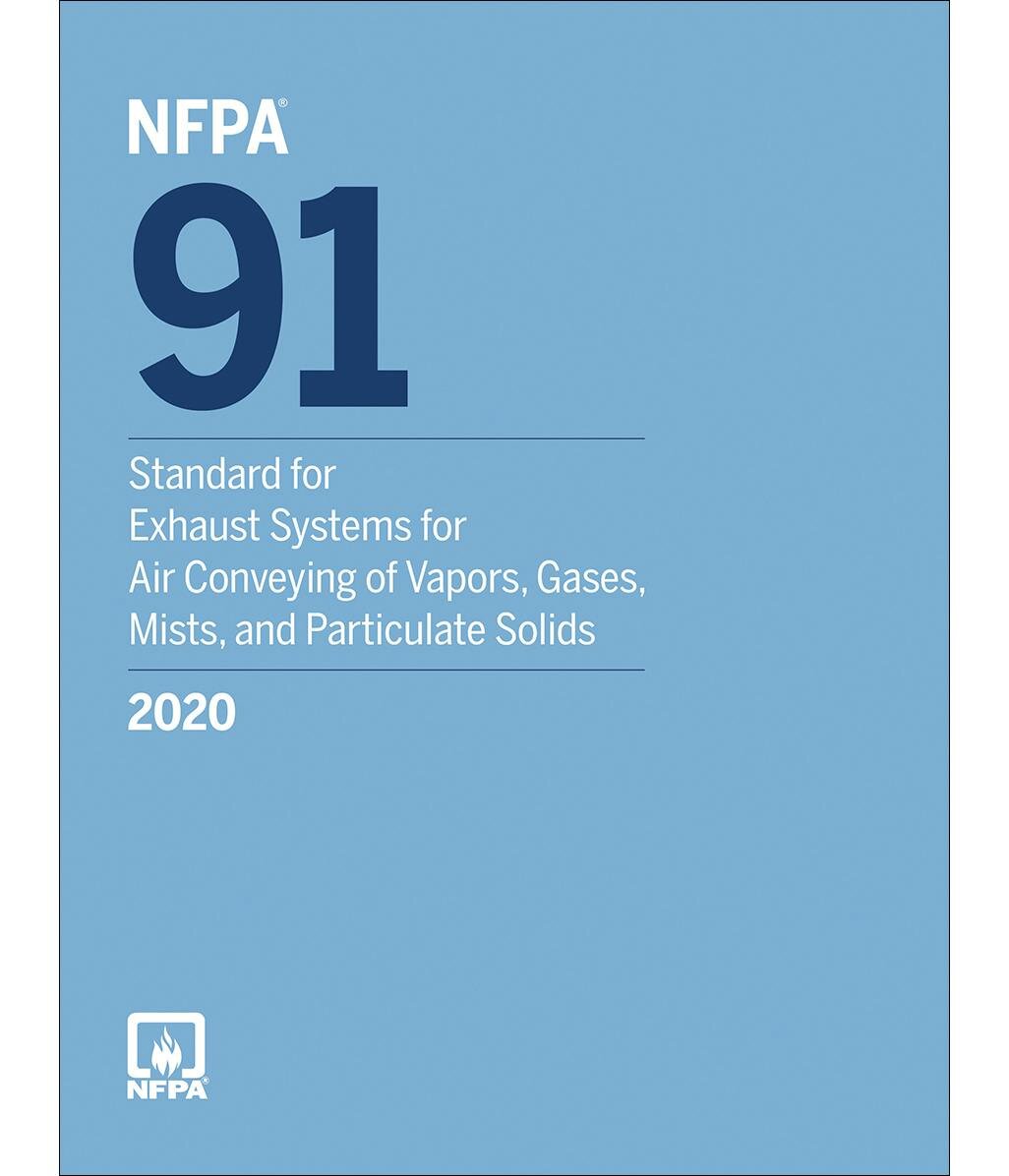NFPA 91 – Standard for Exhaust Systems for Air Conveying of Vapors, Gases, Mists, and Particulate Solids
NFPA 91 is a critical fire safety standard developed by the National Fire Protection Association that provides guidelines for the design, installation, operation, and maintenance of exhaust systems that handle flammable or combustible vapors, gases, mists, and particulate solids. These systems are commonly found in industrial facilities such as chemical plants, food processing units, metal finishing shops, and woodworking operations.
The standard aims to prevent fires, explosions, and hazardous exposures by ensuring that exhaust systems are properly constructed and maintained to safely remove dangerous airborne materials. It covers important aspects such as duct design, material selection, ventilation rates, spark-resistant construction, fire dampers, and system grounding to prevent static electricity buildup.
One of NFPA 91's strengths is its detailed focus on non-combustible ductwork materials and separation of incompatible exhaust streams to reduce the chance of fire or explosion. It also stresses the importance of regular inspections, cleaning schedules, and automatic shutoff systems in case of abnormal operating conditions.
NFPA 91 is often used in conjunction with other safety codes like NFPA 654 (combustible dust) and NFPA 70 (National Electrical Code) to create a comprehensive safety framework for industries with airborne hazard potential.
Adopting NFPA 91 helps facilities reduce the risk of equipment damage, personnel injury, and production downtime. For plant managers, safety engineers, facility designers, and fire inspectors, NFPA 91 is an essential guide that ensures workplace safety and regulatory compliance.
In summary, NFPA 91 plays a key role in industrial fire prevention and environmental safety by providing trusted guidance on managing exhaust systems that transport hazardous materials through air.





Comments